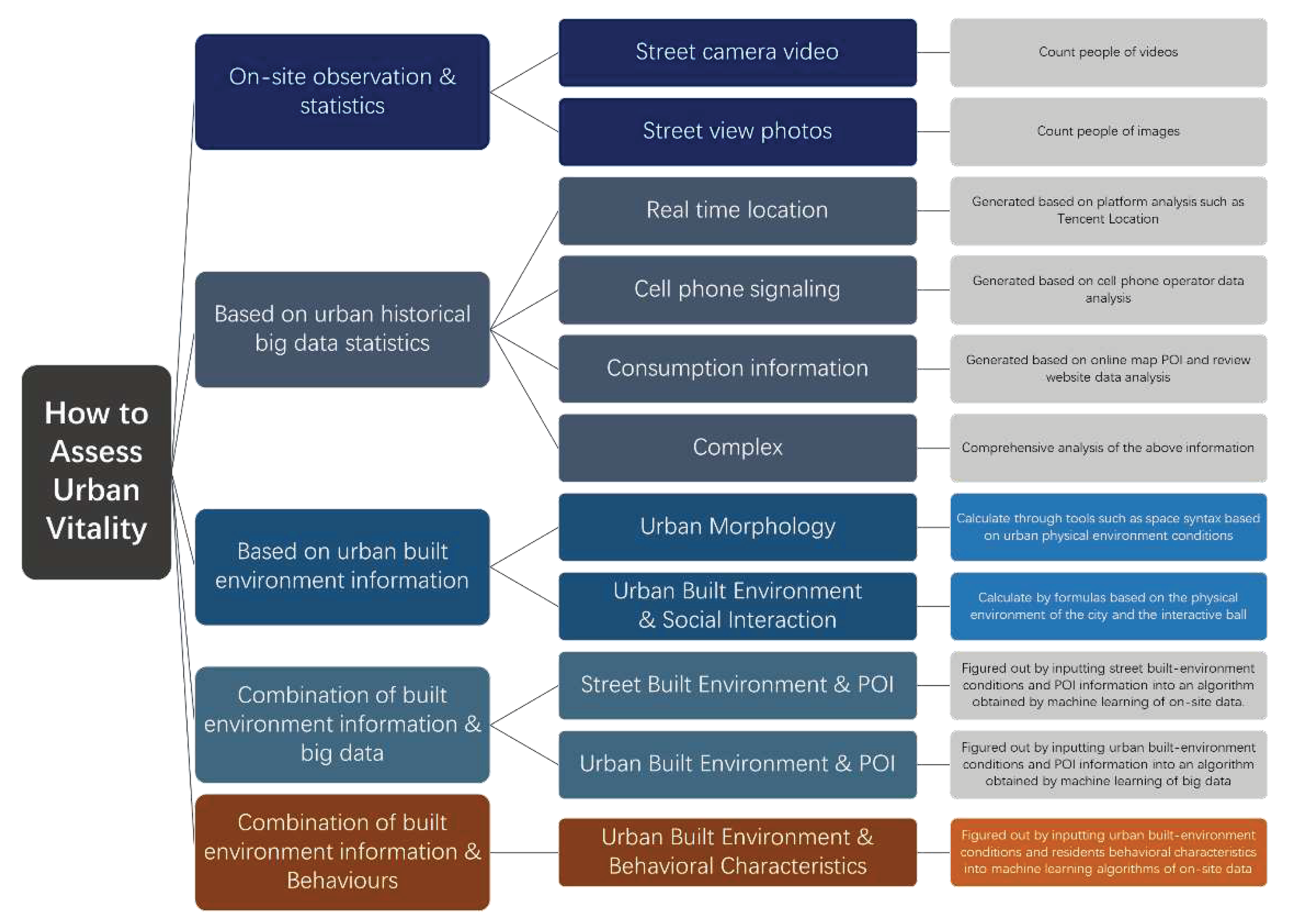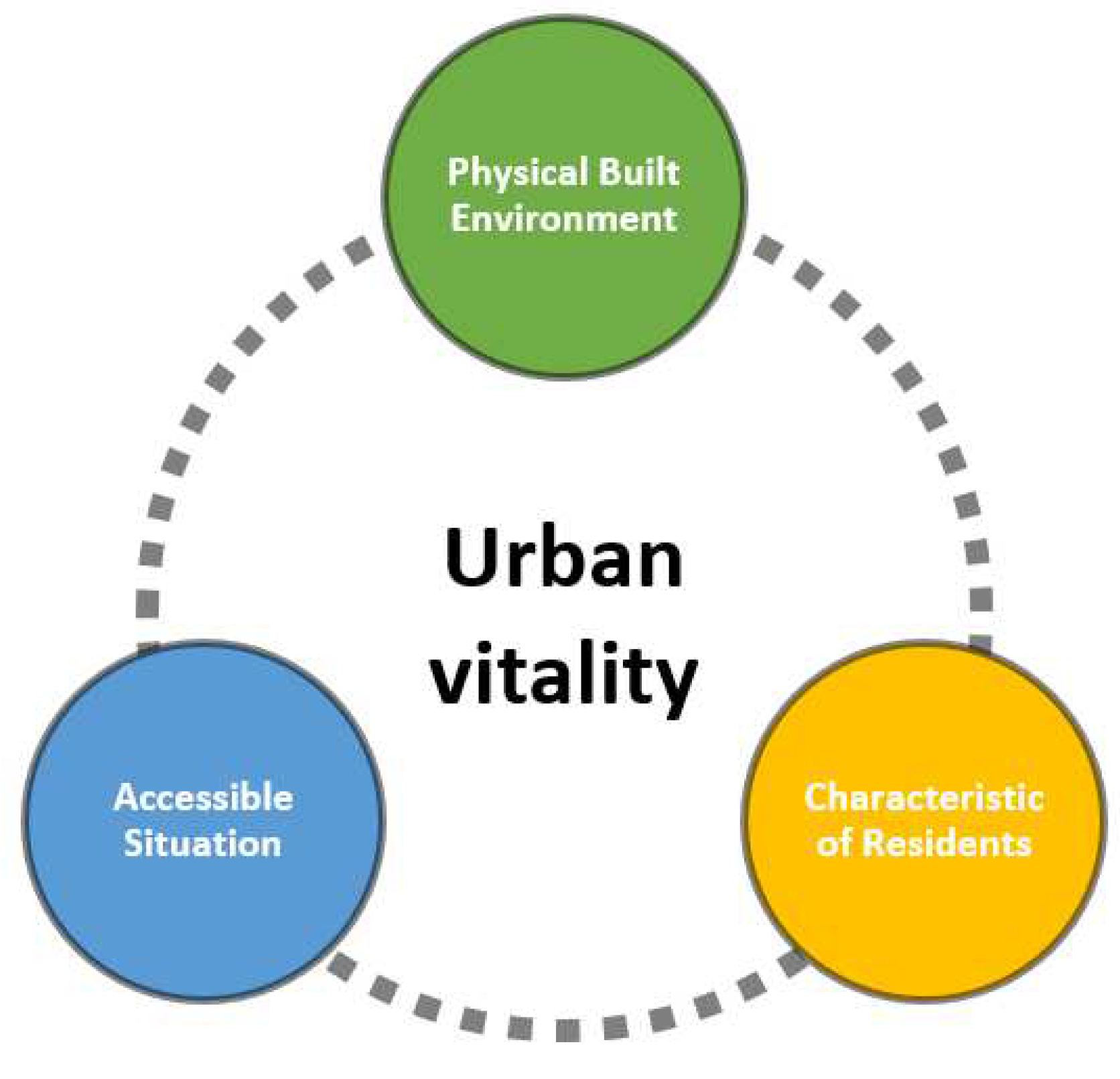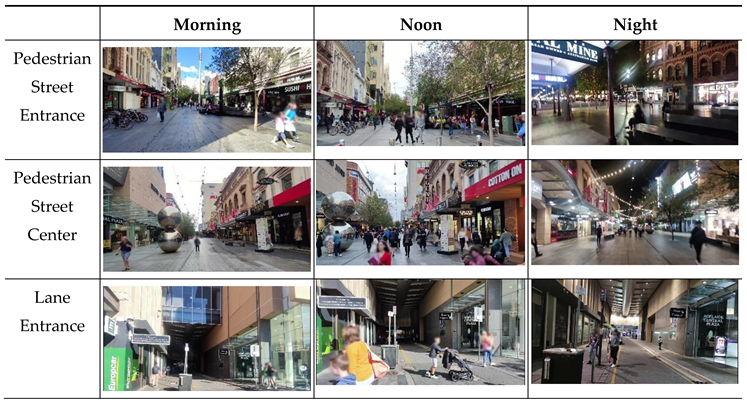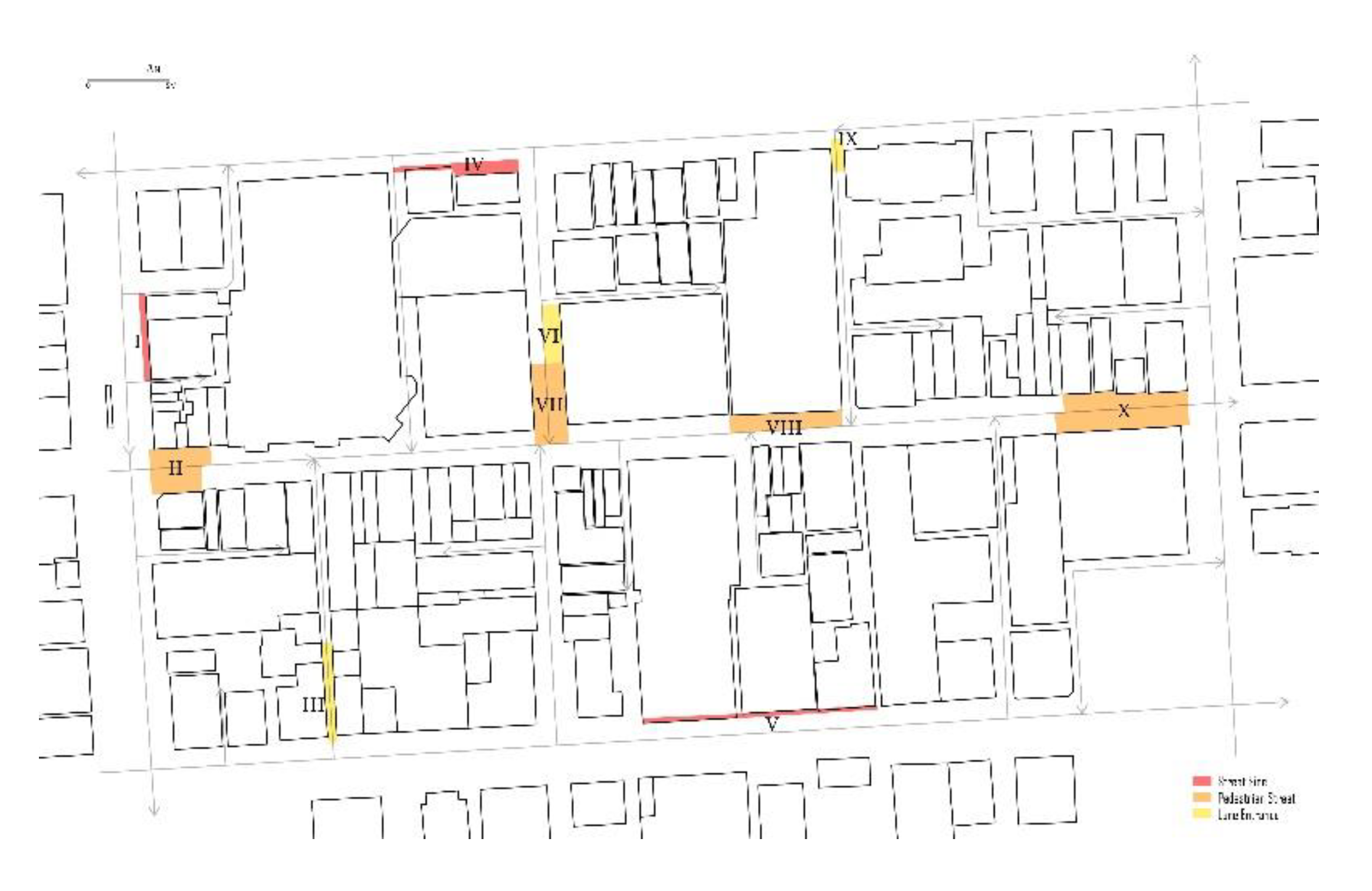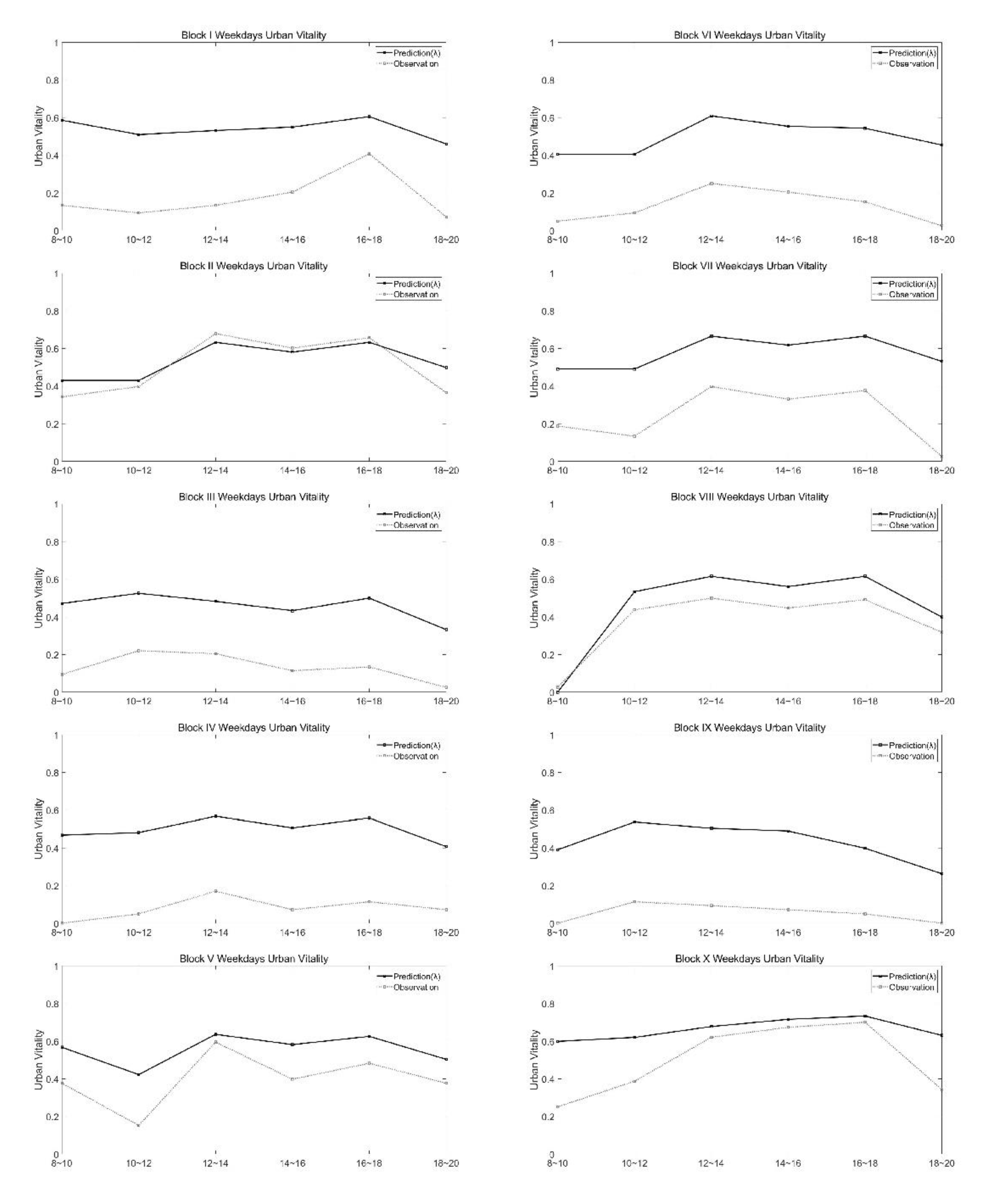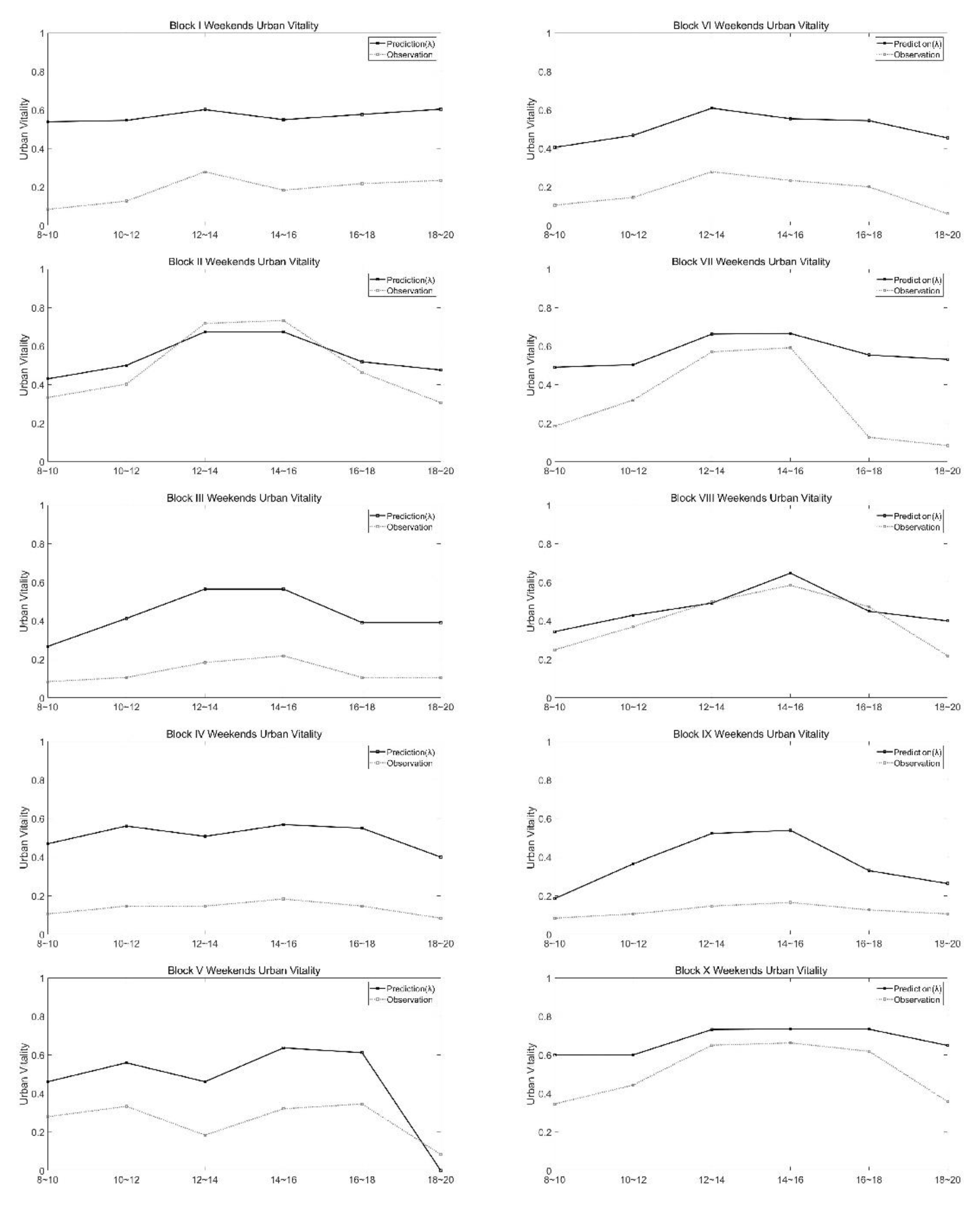3.1. Indicators
Physical built environment of the place, surrounding accessible situation, and the characteristics of residents affect the urban vitality of a place at a certain time. New indicator system of the dynamic time algorithm of urban public space vitality were proposed based on a review of previous indicator systems as well as the crowd-frequency framework.
Figure 2.
Factors influence urban vitality.
Figure 2.
Factors influence urban vitality.
3.1.1. Indicator system of past studies
The above table reviews five urban vitality studies’ indicator systems. There is a lot of duplication and overlap between different indicator systems. In terms of physical built environment, these methods generally include information on space use, openness, landscape (greening) level, urban form, surrounding building functions and openness, etc. In terms of accessible situation, vehicle accessibility, bus accessibility, and walking accessibility are generally concerned. In terms of the characteristics of surrounding residents, they basically only focus on the population situation.
3.1.2. New Indicator system
The new indicator system refers to the above reviews and crowds-frequency hypothesis framework. In terms of indicator selection, this system tried to screen out possible overlapping parameters, and choose the simplest and lowest acquisition cost one among indicators expresses similar characteristic. In addition to the compilation and use of common indicators from previous generations, new factors such as crowds, frequency, and space for access were also included.
Table 4.
The indicator system of dynamic prediction algorithm of urban public space vitality.
Table 4.
The indicator system of dynamic prediction algorithm of urban public space vitality.
| Factor type |
Indicators |
|
| Physical built environment |
Urban public space |
Spatial social interaction coefficient (depends on function) |
| Attractiveness of outdoor landscape and facility |
| Building next to the public urban space |
Area of ground floor indoor space open to public |
| Spatial social interaction coefficient (depends on function) |
| Openness of buildings |
| Negative factors |
Trash can |
| Homeless |
| Others |
| Accessible situation |
Vehicle accessibility |
Reachable by car |
| Distance to parking lot |
| Public transport system accessibility |
| Walking accessibility |
| Access factor, conditions for the urban space entry |
| Characteristics of residents |
Crowds |
Age |
| Occupation and employment status |
| Frequency schedule of residents |
3.2. Algorithm & Formula
This algorithm model first calculates each parameter of the three types of factors separately.
Physical built environment factors:
in the formula,
-- the factor of physical built environment at a certain time.
Areain -- area of indoor space.
INTERACTin -- interaction coefficient of building space next to the place, depends on mean function and measured according to the interaction ball.
OPENNESS-- openness coefficient for different functions in indoor buildings, values 0, 0.5, and 1 correspond to closed, semi-open, and fully open respectively.
INTERACTout -- outdoor interaction coefficient, depends on mean function and measured according to the interaction ball.
ATTRACTION -- comprehensive attraction level of greening and public activity facilities in outdoor spaces takes an integer from 0 to 2.
NEG -- Internal and external negative factors.
Accessible situation factors:
in the formula,
-- the factor of accessible situation at a certain time.
Accessibilityauto -- accessibility factor of the vehicle of the place.
Accessibilitywalk -- walking accessibility factor of the place.
Accessfactor -- space access factor, whether there are conditions for space entry (such as membership or consumption); completely free is 4, quasi-free is 3, has potential consumption requirement is 2, fully charged / membership is 1.
Residents’ characteristics factors:
in the formula,
-- the factor of residents’ characteristics at a certain time.
GroupRatem -- the proportion of crowd m in the regional population, calculated based on the local population age structure and employment situation.
Frequencym -- the frequency of space usage of crowd m at a certain time, determined by the schedule of the typical image of crowd m. If crowd m can be active, the frequency value is "1", if not, the frequency value is "0".
Then, the factors of the physical built environment, accessible situation, and residents’ characteristics are multiplied to obtain the urban vitality dynamic model prediction results λ. After multiplying all numerical products, the calculation result is taken as a logarithm to make the result more concise.
in the formula, λ -- the predicted value of social spatial interaction of a space at a certain time.
The sorted algorithm formula of dynamic prediction of urban public space vitality is as follows:
Among the parameters, GroupRate, Frequency, Accessibilityauto, Accessfactor, OPENNESS, and NEG will change with time. At different times, according to the calculation formula of the urban vitality dynamic predict model, different corresponding λ values will be generated. The granularity of prediction in the time dimension is improved based on the old research methods.
This study not only established a new dynamic algorithm model but also optimized data processing. Since each element in the model has different dimensions, the actual measured values obtained vary greatly. In order to better organize and calculate data, after the numerical statistics of each element are completed, data processing and integration need to be carried out. Since the statistical data for specific points in this study may have outliers, to keep the useful information in the outliers and make the data less sensitive to outliers, the Z-Score normalization method was used to simplify and improve the accuracy of the model. The processed data conforms to the standard normal distribution, with a mean of 0 and a standard deviation of 1. To prevent negative numbers from making the data difficult to understand, the simplified data will be collectively added by 2 and the interval will be shifted. The calculation formula for data standardization is as follows:
in the formula,
-- Standardized results.
-- original values in different dimensions.
-- the mean of the original data.
-- the standard deviation (std) of the original data.
This normalization will only be applied to parameters with large mean and variance such as area. Since "0" and "1" in "frequency" represent whether an activity is being performed, there is no need to standardize the "frequency" element. In addition, the values assigned to the factors of openness and influence are integers within 4, and there is no need for standardization.
